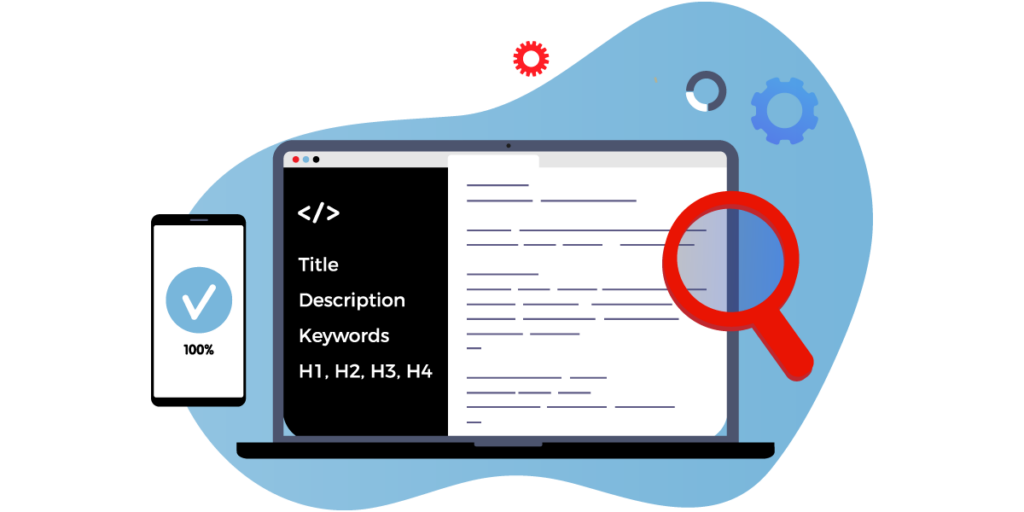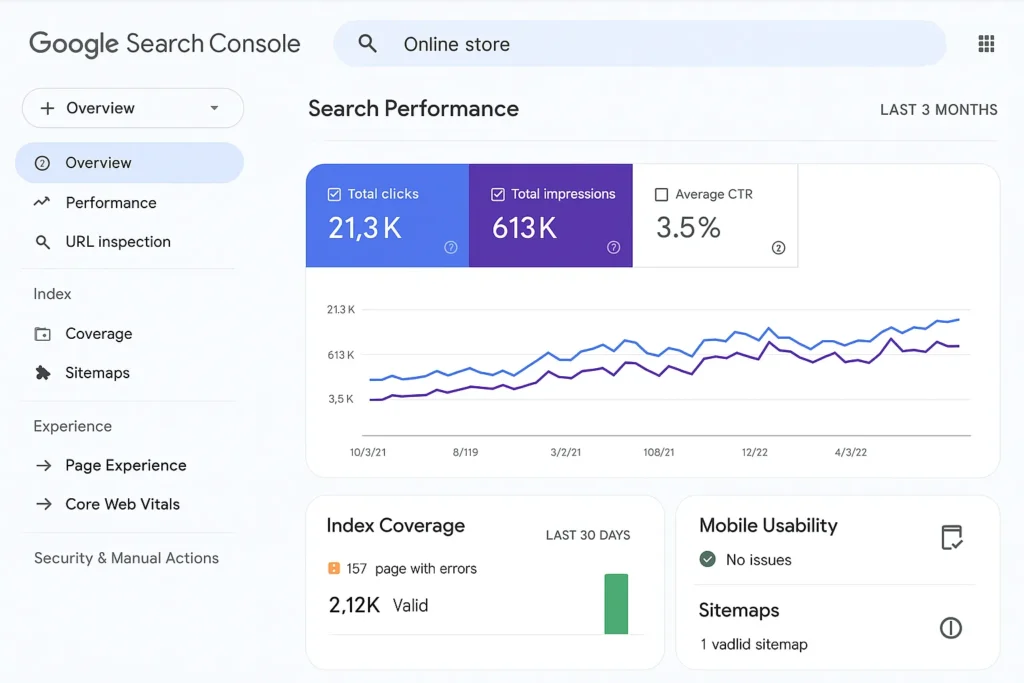Table of Contents
Launching a Shopify store is an exciting milestone. You’ve carefully chosen your products, designed an appealing layout, and are ready to serve your customers. But here’s the truth: without proper SEO, your store is like a shop on a deserted street. It might look fantastic, but if no one knows how to get there, you won’t see traffic or sales. The competition in eCommerce is intense, and you need to be intentional about how you get your store noticed. SEO (Search Engine Optimization) helps make sure your Shopify store ranks high in search engines like Google, so your target customers can find you when they’re ready to buy.
This comprehensive 12-step guide will walk you through the key SEO strategies you need to implement to enhance your store’s visibility, attract more traffic, and boost conversions. Let’s get started!
1. Simplify Your Site Structure and Navigation
One of the most common mistakes in Shopify SEO is neglecting the site structure. Think of your site as a well-organized library. If visitors (and search engines) can’t easily find what they’re looking for, they’ll get frustrated and leave. A clear, logical structure helps Google crawl your site more efficiently and gives your visitors a smoother experience.
- Flat Structure: Keep your Shopify store’s structure “flat”—meaning that all your pages should be no more than three clicks away from the homepage. Google loves flat site structures because it makes crawling your site easier. A flat structure also helps distribute page authority, boosting the SEO for individual product pages.
- Main Menu Navigation: Your navigation bar is one of the first things visitors interact with. Make it user-friendly by highlighting the most important sections of your site, such as collections, product categories, or your blog. Avoid cluttering it with too many links. Focus on what’s essential to your customers’ shopping journey.
Imagine you run a store selling sustainable fashion. Instead of linking to every single collection, keep your navigation clean with categories like “Women’s Clothing,” “Men’s Clothing,” and “Eco-Friendly Accessories.” This helps both users and search engines.
- Breadcrumb Navigation: Enable breadcrumb navigation so that visitors and search engines can easily trace the path back to the previous category or homepage. Breadcrumbs are excellent for SEO and user experience because they keep everything linked and organized.
2. Focus Your Keyword Research on Buyer Intent
When it comes to SEO, keyword research is your foundation. But not just any keyword will do. It’s essential to target search terms that are aligned with what your ideal customers are looking for—and what they’re ready to buy.
- Seed Keywords: Start by identifying seed keywords that represent the broad categories of your products. These keywords should reflect the primary focus of your Shopify store. For instance, if you sell organic skincare products, a seed keyword might be “organic face cream.”
- Long-tail Keywords: While seed keywords are important, they’re usually competitive. This is where long-tail keywords come into play. These are more specific phrases that people use when they’re closer to making a purchase. Long-tail keywords often have lower search volume but higher conversion rates. For example, instead of just targeting “organic face cream,” you might go after long-tail variations like “best organic face cream for sensitive skin” or “affordable vegan skincare products.”
- Analyze Your Competition: Use tools like Ahrefs, SEMrush, or Ubersuggest to analyze your competitors. What keywords are they ranking for? This can give you a clear idea of what terms to target and which gaps you can exploit.
- Shopify Search Analytics: Don’t overlook Shopify’s built-in analytics. Use Shopify Search Analytics or Google Search Console to see what terms visitors are already using to find your site. This can uncover opportunities to optimize your existing content for better rankings.
3. Optimize Product Pages for On-Page SEO
Every product page on your Shopify store is an opportunity to rank for a specific keyword and convert a visitor into a customer. Here’s how you can ensure your product pages are fully optimized:
- Title Tags & Meta Descriptions: Title tags and meta descriptions are the first thing a potential customer sees on Google. Your title tag should be compelling and concise (under 60 characters), with your primary keyword featured prominently. The meta description, which should be under 160 characters, should entice users to click through to your site. It’s like a mini advertisement for the product—be sure to highlight the product’s unique selling points (USPs).
- Product Descriptions: This is where many Shopify store owners trip up. Instead of using the manufacturer’s stock description, write your own. Tailor it to your audience, include the benefits of the product, and incorporate relevant keywords. Break up long text with bullet points to improve readability. For example, if you sell artisanal chocolate, instead of just listing ingredients, you might describe how each flavor is crafted by hand and sourced from sustainable farms.
- Image Alt Text: Ensure that every image on your product pages has descriptive alt text. Alt text helps search engines understand what’s in the image and improves accessibility for users with disabilities. For SEO, try to naturally incorporate your keywords into your alt text, but don’t overdo it.
- H1 Tags & Subheadings: Your primary keyword should appear naturally in the H1 tag (your main page heading). Subheadings (H2, H3) are also a great place to add secondary keywords. This not only improves readability but also signals relevance to search engines.

4. Use Content Marketing to Your Advantage
Blogging might seem like something reserved for influencers or lifestyle brands, but it’s an incredibly powerful tool for Shopify SEO. Regularly publishing quality content can drive traffic to your site, establish you as an authority in your niche, and improve your search rankings.
- Answer Common Questions: Create blog posts that answer the most common questions your customers have. Use tools like AnswerThePublic or even Google’s “People Also Ask” feature to discover what people are searching for. If you sell eco-friendly products, write about topics like “How to Reduce Your Carbon Footprint” or “10 Easy Ways to Live Sustainably.”
- Link to Your Products: Don’t forget to strategically place links to your products within your blog posts. If you’re discussing sustainable living, mention how your eco-friendly accessories can help and link to the relevant product page.
- Create Content Silos: Organize your content into silos, or categories, to keep it structured and easy to navigate. For example, if you sell fitness gear, create a silo for “Fitness Equipment” and populate it with posts like “Best Dumbbells for Beginners” or “How to Choose the Right Yoga Mat.” This helps you build topical authority and strengthens internal linking.
- Update Older Posts: SEO isn’t a one-time deal. Revisit your older blog posts to update them with new keywords, links, or fresh content. This signals to Google that your content is still relevant.
5. Internal Linking: Boost SEO and Keep Visitors Engaged
Internal linking is one of the easiest ways to improve SEO, yet it’s often overlooked. It helps distribute page authority across your site and guides users to related products or content.
- Link Related Products: On every product page, recommend similar or complementary items. For instance, if a customer is viewing a pair of running shoes, link to running socks or other fitness accessories. This not only enhances the user experience but can also increase the average order value.
- Link From Blogs to Product Pages: Always link your blog posts back to relevant products. If you’re discussing “The Benefits of Organic Skincare,” make sure you link directly to your product pages for organic face creams or cleansers.
- Contextual Links: These are links placed within the text of a blog or product description. Instead of just adding “related products” at the bottom of the page, weave links naturally into your content. If you’re talking about fitness routines, link the phrase “yoga equipment” directly to your yoga mats collection.
6. Speed Matters: Optimize for Faster Load Times
Page speed is a critical ranking factor for SEO. Not only do fast-loading websites rank higher, but they also provide a better user experience. Studies show that even a one-second delay in load time can reduce conversions by 7%. In short, faster sites make more money.
- Image Compression: Images are one of the main culprits for slow loading times. Use Shopify apps like TinyIMG to compress your images without compromising quality. A faster site keeps both your users and Google happy.
- Reduce App Overload: Each Shopify app adds extra code to your site, which can slow things down. Limit yourself to the apps that are essential to your store’s operation.
- Enable Lazy Loading: Lazy loading means that images only load as the user scrolls down the page. This is particularly useful if you have a lot of images on your product pages. It ensures that the site loads quickly and reduces bounce rates.
7. Make Sure You’re Mobile-Friendly
More than half of all eCommerce traffic comes from mobile devices, and with Google’s mobile-first indexing, it’s crucial that your Shopify store delivers a seamless mobile experience.
- Responsive Design: Thankfully, most Shopify themes are mobile-responsive out of the box. But don’t assume everything will work perfectly. Test your site on different devices to make sure images, buttons, and text are displaying correctly. Ensure that your product pages and checkout process are as user-friendly on mobile as they are on desktop.
- Avoid Intrusive Popups: Popups that interrupt the mobile experience can be frustrating and lead to high bounce rates. Instead, use exit-intent popups or smaller, less intrusive banners to capture email sign-ups or promote offers.
- Mobile-Optimized Checkout: Make sure your checkout process is smooth and quick on mobile devices. Simplify form fields and enable auto-fill where possible. A complicated or clunky mobile checkout can cause customers to abandon their cart.
8. Use Schema Markup for Rich Snippets
Schema markup, also known as structured data, helps search engines understand the content of your pages. This can improve your chances of getting rich snippets—those special search results that show things like product ratings, prices, and FAQs.
- Product Schema: This allows Google to display key information about your products, such as price, availability, and star ratings, directly in search results. Rich snippets make your search results stand out and can significantly increase your click-through rates.
- FAQ Schema: If you have an FAQ section on your product pages or blog posts, use FAQ schema to display that information in search results. This can boost your visibility and improve user engagement.
- Review Schema: Encourage customer reviews and use review schema to display those reviews in Google’s search results. Positive reviews build trust and credibility, and showcasing them in the SERPs (search engine results pages) can lead to higher click-through rates.
9. Check Your Technical SEO Basics
Technical SEO might sound intimidating, but Shopify makes it relatively simple. Here are the essentials:
- Submit Your Sitemap: Shopify automatically generates a sitemap for your store. Submit this sitemap to Google Search Console to ensure all your pages are indexed. This helps Google find and crawl your content more easily.
- Fix Duplicate Content: Shopify’s default settings sometimes create duplicate content, particularly with product pages that are accessible through multiple URLs. Use canonical tags to tell Google which version of the page is the “main” one to avoid any penalties for duplicate content.
- Check Your Robots.txt File: The robots.txt file tells search engines which pages they’re allowed to crawl. Make sure you’re not accidentally blocking important pages like product or category pages from being indexed.
10. Build High-Quality Backlinks
Backlinks are still one of the most important ranking factors in SEO. They’re essentially votes of confidence from other sites. The more high-quality backlinks you earn, the more trustworthy your Shopify store appears to Google.
- Influencer Outreach: Partner with influencers who align with your brand. Send them free products in exchange for a review or a shout-out. Not only does this help with exposure, but it can also lead to valuable backlinks.
- Guest Blogging: Reach out to blogs in your niche and offer to write guest posts. For example, if you sell artisanal coffee, you could write a guest post on a food blog about the best brewing methods for a perfect cup of coffee. Make sure the post includes a link back to your store.
- The Skyscraper Technique: This technique involves finding content in your niche that’s already earning backlinks, creating a better version of it, and then reaching out to the sites linking to the original content. Offer them your superior version as a replacement.
11. Leverage Shopify’s SEO Tools
Shopify has a range of third-party apps that make SEO easier. Here are a few worth considering:
- Plug in SEO: This tool performs an SEO audit on your Shopify store, helping you identify broken links, missing meta tags, and other SEO issues that could be hurting your rankings.
- Smart SEO: This app helps you add structured data (schema markup) to your store, which can improve your chances of earning rich snippets.
- Google Search Console: While not exclusive to Shopify, this free tool is a must-have for tracking your store’s performance on Google. It provides insights into which keywords are driving traffic, helps you identify indexing issues, and allows you to submit sitemaps.

12. Monitor and Refine Your SEO Strategy
SEO is a marathon, not a sprint. You won’t see results overnight, but by consistently monitoring and adjusting your strategy, you can gradually improve your rankings and traffic.
- Google Analytics: Regularly check Google Analytics to monitor your site’s performance. Look at metrics like bounce rate, session duration, and conversion rate to identify potential issues or opportunities for improvement.
- Ahrefs and SEMrush: These tools allow you to track your keyword rankings, analyze your competitors, and discover new keyword opportunities. Set up regular audits to ensure your SEO strategy is on track.
- Review and Adjust: SEO is constantly evolving, and so should your strategy. Stay up to date with the latest trends, and be ready to adjust your approach as needed. Whether it’s incorporating new keywords, updating old content, or fixing technical issues, always be refining your strategy.
Final Thoughts
Mastering SEO for your Shopify store takes time and effort, but the rewards are worth it. By implementing a well-rounded SEO strategy that includes solid site structure, targeted keyword research, content marketing, and technical optimization, you can improve your search rankings and drive more traffic to your store. The result? Increased visibility, more customers, and higher sales. Remember, SEO isn’t a one-and-done task—consistent monitoring and refinement are key to long-term success.
Stay proactive, keep learning, and soon you’ll see the results of your efforts as your Shopify store climbs the rankings and your business thrives.



